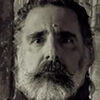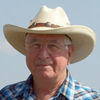Photo Old Photos
Oct 18, 2020 12:39:00 #
Peterfiore wrote:
Light your photos with two lights, one from each side. Each light at a 45degree angle to the subject photo. Place your camera on a tripod with a macro (flat field) lens. Use a polarizing filter and you will be able to dial all the glare out.
It is even easier to remove any glare from photos that are printed on textured papers if you also place polarizers over the lights. The filters over the lights must be oriented in the same direction and the one on the camera at 90 degrees to that. Any kind of light source will work. When I did this frequently I used sealed photo floods, similar to the floodlights with built-in reflectors to light you yard.
Oct 18, 2020 13:02:52 #
PHRubin wrote:
I, also, prefer scanning.
If you scan, you probably can't get RAW copies.
If you scan, you probably can't get RAW copies.
My opinion, also, is to scan them. I have an Epson V700 and I use Vuescan software. That way I can scan to DMG files if I like. Others have said they scan to hi res JPEG but I think that's a mistake. You should save as TIFF files at least, but once I was able to save DMG files I went in that direction. That way I always have an original that can't be permanently altered in error!
The OP says he doesn't have a scanner. I have found that a scanner is an indispensable tool to have next to my computer. I scan every document that comes in the house. I save them in a folder for the current year with subfolders for type i.e., medical, tax, credit cards, insurance, etc. When my accountant emails me at tax season I can send him everything he needs right away. In case you get audited, the IRS will accept digital copies of any records so I've cut down on saved paper.
Another plus is by saving every bill or receipt I have been able to go back and precisely date a photograph from the days when I never bothered to write anything on the back of a print. That has made me aware of the value of putting information in my current digital photos' EXIF data.
As far as taking a photo of a print with your digital camera, it seems to me you need to develop a professional's skill in lighting. Have you seen the results that people have posted of photos of prints? Pretty ugly. And a scanner can eliminate any curling problems you may run into with old prints or documents.
Oct 18, 2020 13:19:09 #
I think that before I spend a lot of time and money on lights and filters, it would be simpler to buy a scanner. I'm not ready to do either yet. Using advise I have gotten so far, I will do some experimentation. Chuck
Oct 18, 2020 13:19:16 #
pquiggle wrote:
It is even easier to remove any glare from photos that are printed on textured papers if you also place polarizers over the lights. The filters over the lights must be oriented in the same direction and the one on the camera at 90 degrees to that. Any kind of light source will work. When I did this frequently I used sealed photo floods, similar to the floodlights with built-in reflectors to light you yard.
Exactly....cross-polarization is the way to go....For paintings, it's an absolute.
Oct 18, 2020 15:05:51 #
chuckbear wrote:
I have albums full of old photos I would like to turn into digital but don't want to send them off to someone. So I have been considering reshooting them with my digital camera and doing some post-process improvements. My question is...would it be best to shoot them in raw format for best processing or some other form? Thanks for any suggestions. Chuck
Hi Chuckbear:
Here is what I did with an old photo album my father had created..
I inherited an album of photos my father had taken of all the family members starting with his wedding days around 1935. The last photo was in 1961. All the photos were all black and white.
Over the years, they were damaged a lot. The damage was physical, water damage and also from not having acid free papers in the album.
My wife and I decided to scan each photo at 1200 DPI and then clean it in Photoshop, then convert it to 300 dpi before printing in a new photo album.
We decided to time the effort and found that it took us 250 hours to scan and clean all the photos. There were hundreds of dots from the acid damage. There were some creases on many photos. Some were damaged by water which was dropped on it by accident when someone was watching it while drinking water.
After working on the cleaning job for 30 minutes, our eyes would be strained and one of us had to stop and the other would take over.
In the end, we found it was really worth the effort. There were photos of all my uncles and aunts who have passed away now. There is only one photo of my grandmother (my father’s mother) and few other very unique photos.
We printed a black and white album with a simple brown cover to make it look as similar to the original and made 8 copies and distributed them to all my nephews and nieces to keep one copy as a remembrance.
So, good luck with your effort and hope all comes out well.
Cameraman
Oct 18, 2020 15:12:55 #
Bayou wrote:
And that's the job I recommended it for. The sheet feed will burn through boxes of loose photos in a third (probably even less) the time of a flatbed.
It is possible to own different tools for different jobs.
It is possible to own different tools for different jobs.
That is certainly true but I prefer to have tools that do several different things than one tool for each job.
Personal choice.
Oct 18, 2020 15:23:52 #
Oct 18, 2020 15:51:29 #
chuckbear wrote:
I have albums full of old photos I would like to turn into digital but don't want to send them off to someone. So I have been considering reshooting them with my digital camera and doing some post-process improvements. My question is...would it be best to shoot them in raw format for best processing or some other form? Thanks for any suggestions. Chuck
I would buy an Epson Fast-food 680w scanner. It scans very fast, single or both sides and color corrects for you. Excellent scanner. You can also use it to scan long documents and convert receipts warranty cards to digital.
Larry
Oct 18, 2020 16:23:17 #
maybe the frame count on your camera should not be ignored, and it is a good reason to scan the photos..
Oct 18, 2020 17:28:54 #
Peterfiore wrote:
Light your photos with two lights, one from each s... (show quote)
I use an App Photomyne and it scans it to your phone their is a yearly charge I do not remember the coast but it is not outrageous
Oct 18, 2020 19:10:09 #
Tote1940
Loc: Dallas
chuckbear wrote:
I have albums full of old photos I would like to turn into digital but don't want to send them off to someone. So I have been considering reshooting them with my digital camera and doing some post-process improvements. My question is...would it be best to shoot them in raw format for best processing or some other form? Thanks for any suggestions. Chuck
To scan from print no advantage to scan more than 300-600 dpi do not need a high resolution scanner but need good scanning software
Most flatbed scanners will do but use VueScan
This software allows saving as TIFF uncompressed to allow further processing also has compensation for faded prints
Negatives and slides that is a different problem
There are few film scanners being made today
I think Pacific Rim is making them have not used them
Scanned over several years around 200000 with Canon and Minolta both units now dead
Oct 18, 2020 19:50:20 #
I had a few hundred to copy. I started with my epson ET printer. Took too long , then I started taking pix with my camera. Lighting etc was a mess. Then I started using my cellphone. Im happy with the results and it didnt take long at all.
Oct 18, 2020 19:51:47 #
chuckbear wrote:
I have albums full of old photos I would like to turn into digital but don't want to send them off to someone. So I have been considering reshooting them with my digital camera and doing some post-process improvements. My question is...would it be best to shoot them in raw format for best processing or some other form? Thanks for any suggestions. Chuck
Since Chuck mentions that the photos are in albums, removing them for scanning may damage the photos. In addition, scanning as individual photos, looses the context of the collection in its entirety. Since most albums will not fit in a photo scanner, the best action is to photograph them with a digital camera. For this a short macro lens is the recommended tool. Camera parallel to the album page. Even lighting using two soft lights at a 45-degree angle to the surface. In the event of a shiny plastic album page, or texture on the photos applying a polarizing filter on the lights and one on the camera lens at 90-degree angles to each other. Use RAW.
Once the entire album is digitally documented, individual photos can be removed for digitalization. A photo scanner is the best tool for this. Scan at 600 dpi or greater and use tiff or dng format. Alternately, you can use the same camera set-up. You may need to switch to a longer macro lens, to keep the camera out of the lighting, as it will be closer to the surface.
Oct 18, 2020 20:23:57 #
rmalarz wrote:
Epsom??? as in salts?
--Bob
--Bob
Nope. I think he means salts as in “nic salts”, from a vapers point of view.
Oct 18, 2020 22:25:49 #
Tote1940
Loc: Dallas
One point about VueScan
Apparently it has a feature where whole album page can be scanned with several prints, software can divide into individual files
I have not user it yet
Anyone?
Again I think Twain drivers and scan software are very important , software included with scanners pretty poor
Have tried half a dozen flat bed scanners as opposed to film scanners results look the same to me, determined by software not machine
Apparently it has a feature where whole album page can be scanned with several prints, software can divide into individual files
I have not user it yet
Anyone?
Again I think Twain drivers and scan software are very important , software included with scanners pretty poor
Have tried half a dozen flat bed scanners as opposed to film scanners results look the same to me, determined by software not machine
If you want to reply, then register here. Registration is free and your account is created instantly, so you can post right away.





